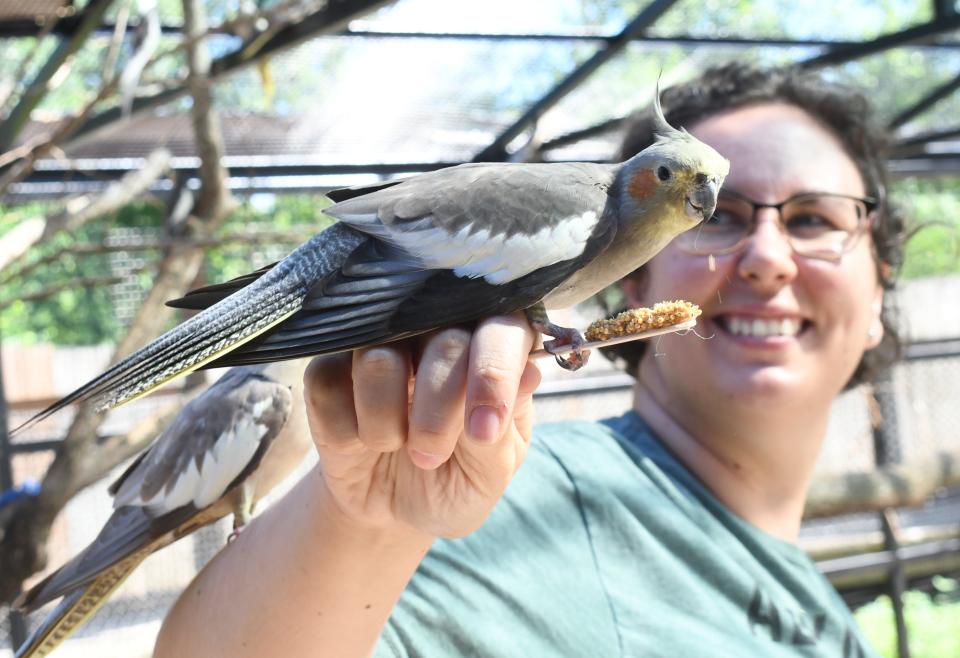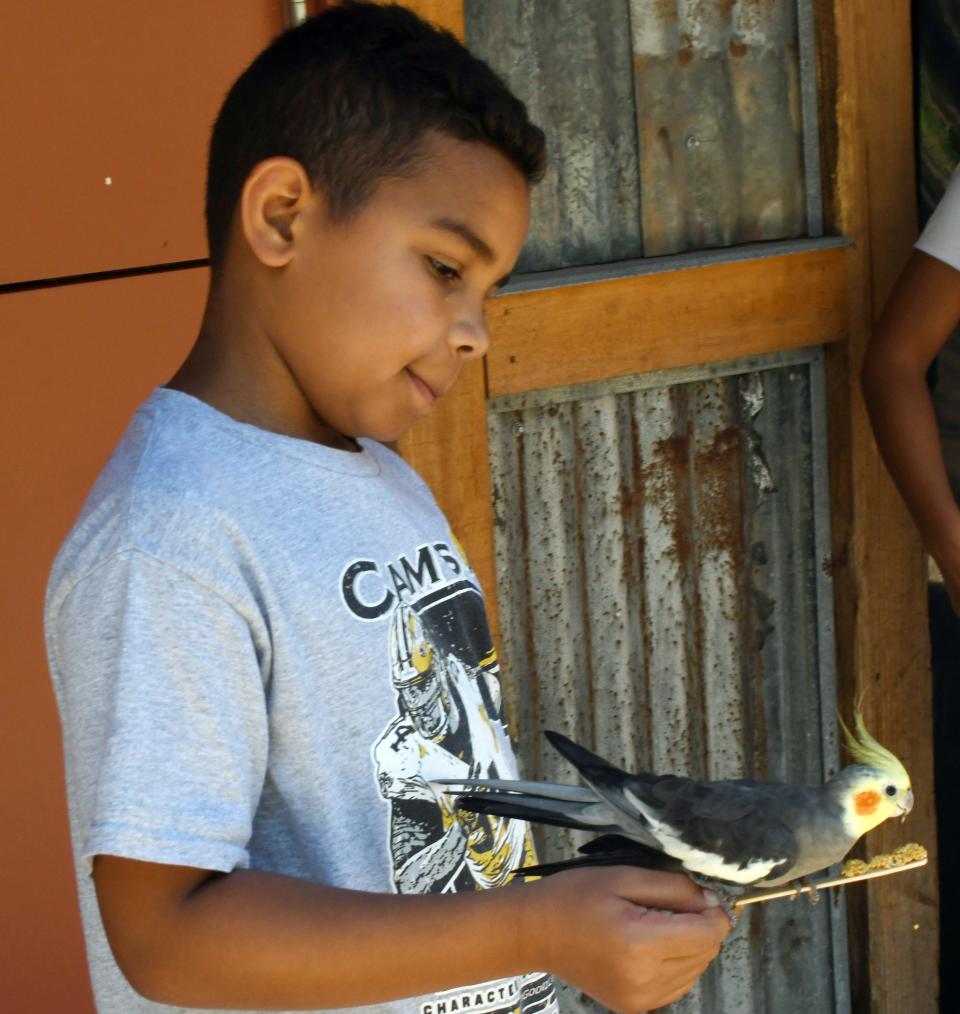For the birds: Alexandria Zoo exhibit lets you see, touch, feed parrots and parakeets
Catie Hirsh holds out a feed stick and a cockatiel flies down to perch on her hand while another perches on her arm.
The cockatiels are among the 70 birds that are part of the Alexandria Zoo's interactive exhibit the Aussie Aviary. The exhibit is the only interactive opportunity that allows visitors to share a habitat with a zoo resident said Hirsh, the zoo's education coordinator.
"This experience to get to be in a shared habitat with the birds is really giving our visitors a deeper connection to wildlife that they haven't gotten to encounter before," she said. "And through this connection, it's building a sense of empathy for wildlife and in turn inspiring a want for conservation."
"I think it's awesome," said Sheila Metoyer of Alexandria. She brought her two grandchildren, Alonzo Metoyer and Brailey Metoyer, both 10.

"They were a little scared at first but Alonzo fell right into place feeding them," she said.
Alonzo held the feedstick in front of him while one of the cockatiels sat on his hand and feasted on it.
"It's kind of cool that an actual animal was this close," he said. "I got to touch a bird."
"While so many of our visitors have encountered cockatiels before, maybe a personal pet, to see a whole flock of them is something that our community has got to experience," said Hirsh. "To see those natural behaviors, this variety of species interacting together is really a truly unique experience for our area."
"It's an immersive experience," said Max Lakes, zoo director. "Everybody gets excited. They love it."
There are four species of birds in the aviary, said Lisa Laskoski, general curator.
"Cockatiel is the most numerous in there," she said. "They're the smaller birds with the crest on their head that stands up when they feel like standing it up."
There are five red-fronted parakeets, two princess parrots and two Eastern rosellas.
Local news: Louisiana artists take No Man's Land exhibit to French gallery
The red-fronted parakeets are mostly green with a little bit of red on the front of their heads. The Eastern rosellas are brightly multi-colored with reds and blues and have been nicknamed the "rainbow bird."
"That's what the kids call it," said Laskoski.
The parrots are a pastel color and they don't "talk."
"Any of them can sort of mimic but not like an African grey," she explained. "You're not going to hear words — real strong words."
Journey through grief: Alexandria woman dives into music, moviemaking, theater
The birds were donated from the Woodland Park Zoo in Seattle, Washington, which had an indoor walk-thru aviary.
"They were shutting theirs down," said Lakoski. "They had it for multiple years. They decided to reassign that space so they needed to re-home the birds."

They had 70 birds that the Alexandria Zoo brought down for the exhibit. It made Lakoski's job easier since she didn't have to search all at once for 70 birds.
Guests have to purchase a ticket to feed the birds at the main entrance. When they get to the Aussie Aviary, they exchange the ticket for a feedstick.
"The feedstick has the food attached to it, so when they get into the aviary, they just hold out the feedstick," said Hirsh.
They can hold it up to one of the birds and feed them where they are perched, or the visitors can hold the stick and let the birds fly down and perch on their hands to eat.
The exhibit opens at 10 a.m. for feeding. The best time to visit in the summer is in the morning, said Hirsh.
This article originally appeared on Alexandria Town Talk: You can see, touch and feed birds at immersive Alexandria Zoo exhibit

